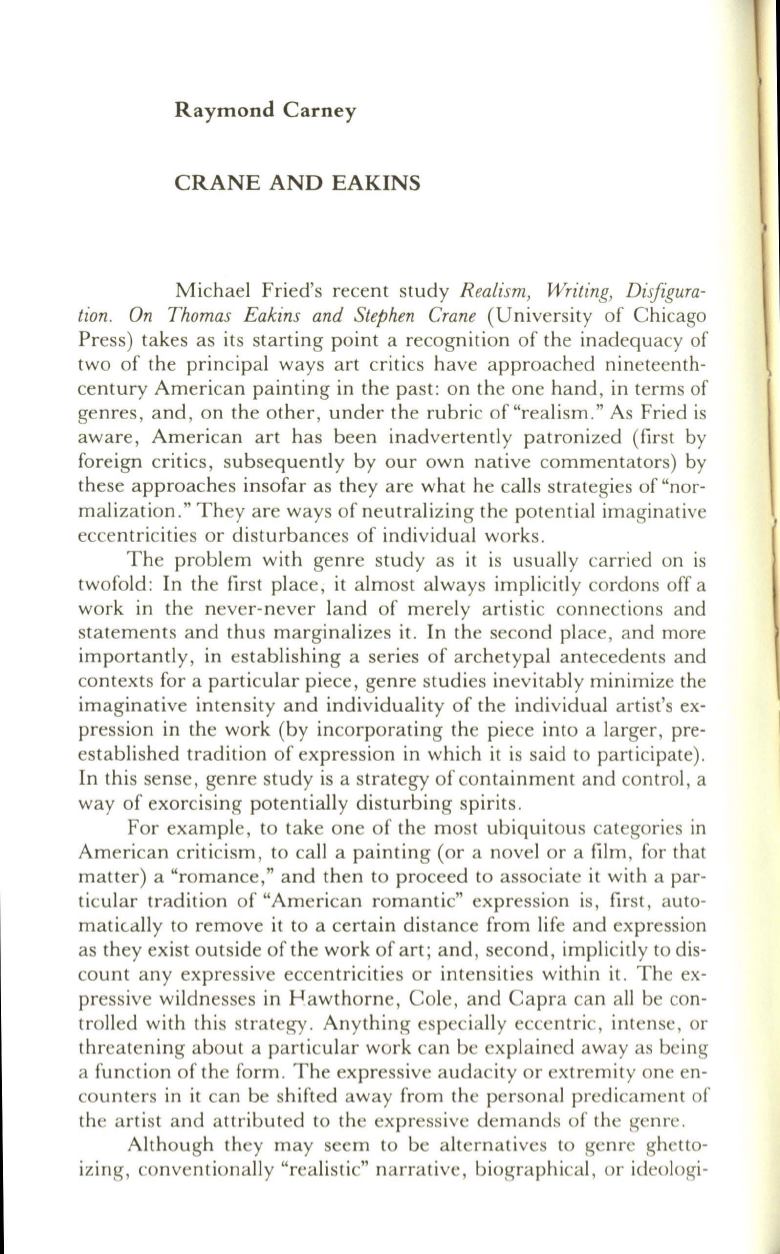
Raymond Carney
CRANE AND EAKINS
Michael Fried's recent study
Realism, Writing, Disfigura–
tion. On Thomas Eakins and Stephen Crane
(University of Chicago
Press) takes as its starting point a recognition of the inadequacy of
two of the principal ways art critics have approached nineteenth–
century American painting in the past: on the one hand, in terms of
genres, and, on the other, under the rubric of "realism ." As Fried is
aware, American art has been inadvertently patronized (first by
foreign critics, subsequently by our own native commentators) by
these approaches insofar as they are what he calls strategies of "nor–
malization ." They are ways of neutralizing the potential imaginative
eccentricities or disturbances of individual works .
The problem with genre study as it is usually carried on is
twofold : In the first place, it almost always implicitly cordons off a
work in the never-never land of merely artistic connections and
statements and thus marginalizes it. In the second place, and more
importantly, in establishing a series of archetypal antecedents and
contexts for a particular piece, genre studies inevitably minimize the
imaginative intensity and individuality of the individual artist's ex–
pression in the work (by incorporating the piece into a larger, pre–
established tradition of expression in which it is said to participate) .
In this sense, genre study is a strategy of containment and control, a
way of exorcising potentially disturbing spirits.
For example, to take one of the most ubiquitous categories in
American criticism, to call a painting (or a novel or a film, for that
matter) a "romance," and then to proceed to associate it with a par–
ticular tradition of "American romantic" expression is, first, auto–
matic.ally to remove it to a certain distance from life and expression
as they exist outside of the work of art; and, second, implicitly to dis–
count any expressive eccentricities or intensities within it. The ex–
pressive wildnesses in l-lawthorne, Cole, and Capra can all be con–
trolled with this strategy. Anything especially eccentric , intense , or
threatening about a particular work can be explained away as being
a function of the form. The expressive audacity or extremity one en–
counters in it can be shifted away from the personal predicament of
the artist and attributed to the expressive demands of the genre.
Although they may seem to be alternatives to genre ghetto–
izing, conventionally "realistic" narrative, biographical , or ideologi-


